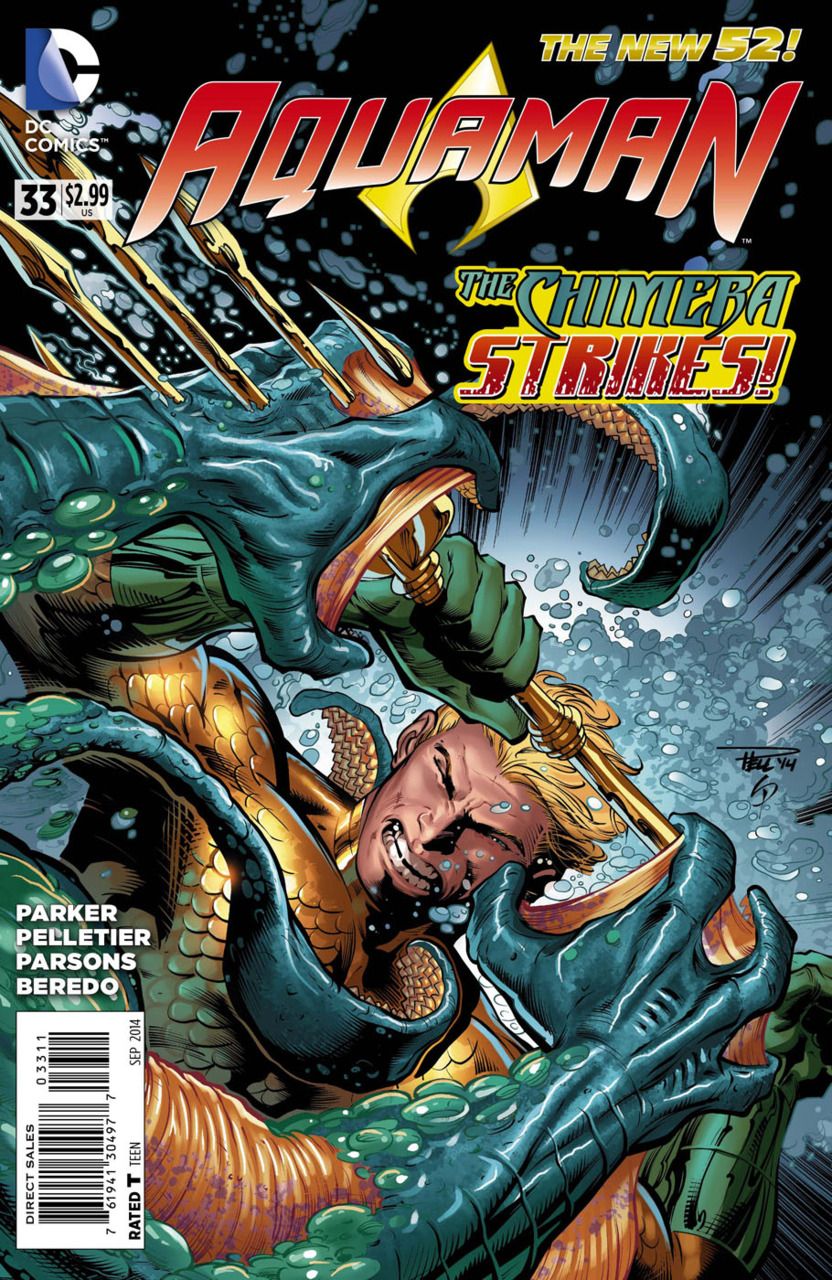"Aquaman" #33 opens with an image fit for a movie poster: a menacing monstrosity from the depths covers a significant distance to attack Aquaman with his own subjects -- sea creatures of a fantastic variety -- as the underwater king struggles to subdue his opponents without inflicting bodily harm. From this first image through the next twenty pages, the creative team of writer Jeff Parker, penciller Paul Pelletier, inker Sean Parsons, colorist Rain Beredo and letterer Dezi Sienty synch up and work harmoniously, giving readers a wonderful experience of Aquaman's world both in and out of the sea.
After the first spread, the following pages reveal an astonishing adaptability from the visual side of the creative crew. Five widescreen images continue the campaign for this story to be considered for other media, faded psychic memories, explosive blackouts and silhouettes all pop up in the course of ten magnificent looking panels from Pelletier, Parsons, Beredo and Sienty. This creative quartet establishes a new set of standards for Aquaman comics as their collaboration continues to shine as an example of seamless integration. Sienty's sound effects don't overpower the visuals, nor is Pelletier's art lost under Parson's inks or Beredo's colors. All four creators accentuate the others' strengths and make "Aquaman" #33 one of the best looking books on the rack.
Of course, a pretty comic book is only half the equation. Luckily, Jeff Parker is on task for the story in "Aquaman" #33. As he has done throughout his run, Parker is less focused on Aquaman as king of Atlantis or member of Justice League as he is on Aquaman as a human being whose live spans more than one setting. In that regard, Parker has lined up opponents for the Sea King that are worthy of a character that rubs shoulders with Wonder Woman and Superman and considers three-quarters of the world to be under his supervision. In some cases, such as the foe in this comic, Parker dusts off old concepts and infuses them with a healthy dose of classic monster movie embellishment. Chimera can control the sea life, same as Aquaman, but he might even be able to do it better. Making the sea creature more of a threat, Parker has given him the ability to shape shift, as well as a range of other defensive and offensive capabilities found in denizens of the deep. So far in his run, Parker has added to Aquaman's corner of the DC Universe, stretching beyond Black Manta and Ocean Master, giving Aquaman and the rest of the DCU more to work with and grow around.
"Aquaman" #33 is a startling violent issue in Parker and Pelletier's run, with Chimera leaving a trail of damage and a pile of bodies. Parker makes it clear Chimera is as much monster as man and gives readers a story meant to make them uncomfortable -- as readers and as observers -- while Amnesty Bay and the medical ship "Haven" both sustain attacks from Chimera. Parker gives readers no guarantees in his take on the adventures of Aquaman and Mera, which is exactly how it should be. All of DC's less prolific characters should have the opportunity to shine with a creative team as solid as the one in place on "Aquaman" #33.

